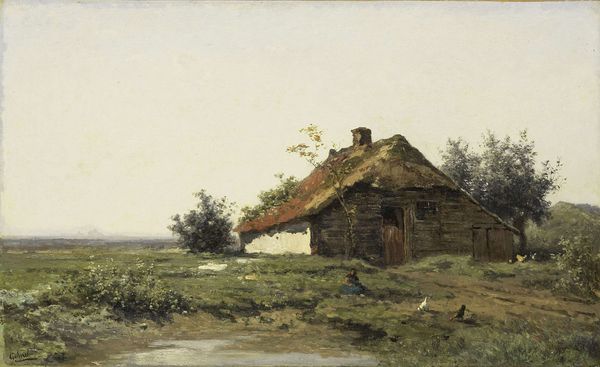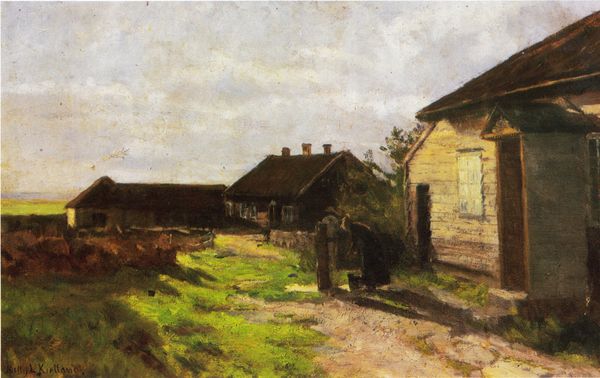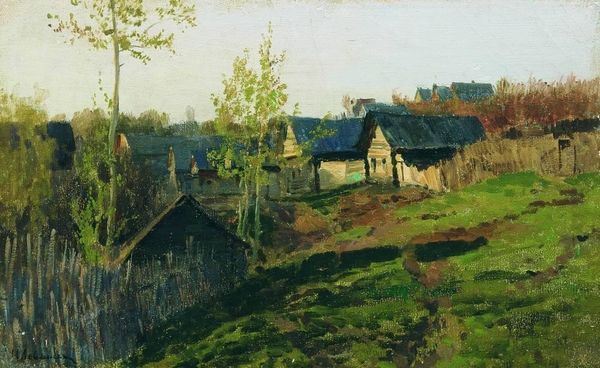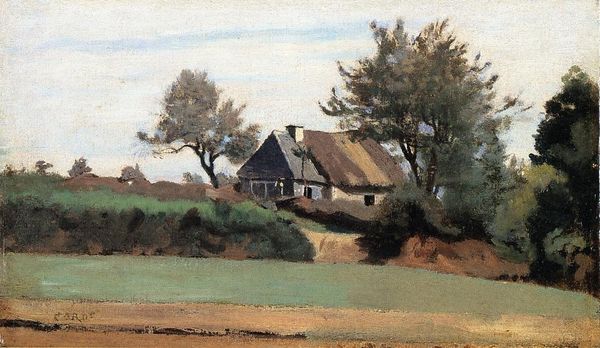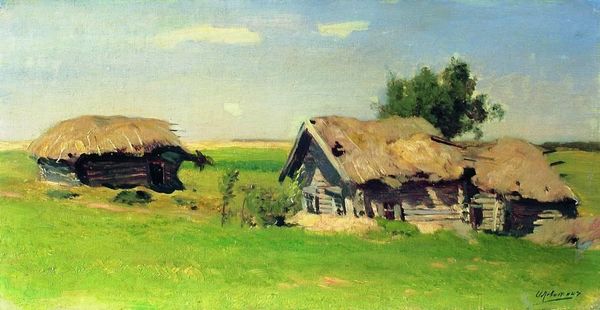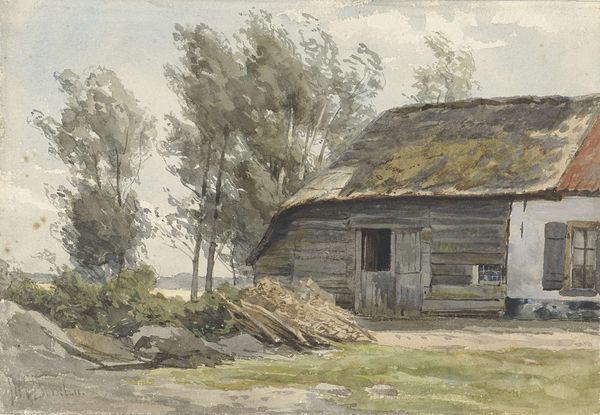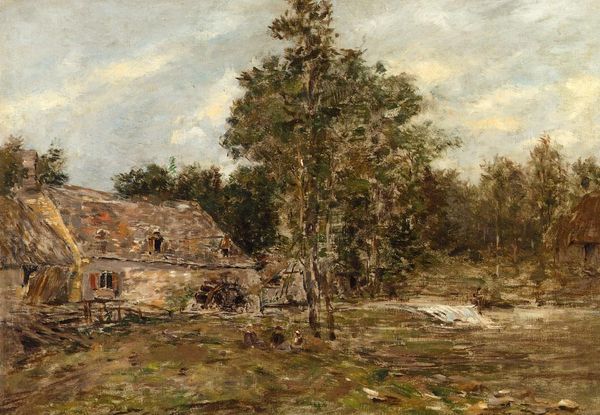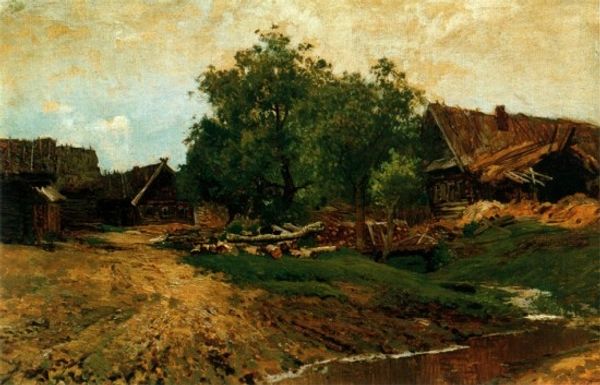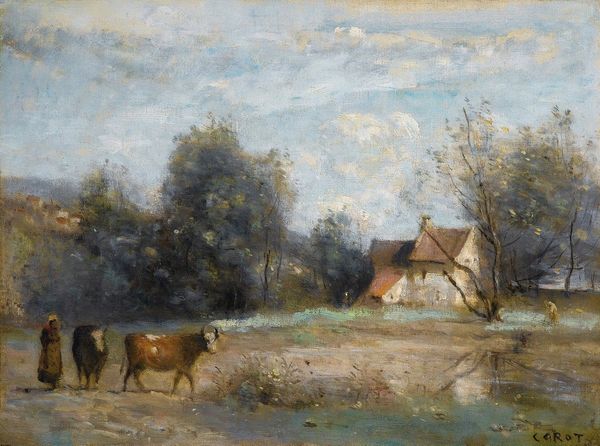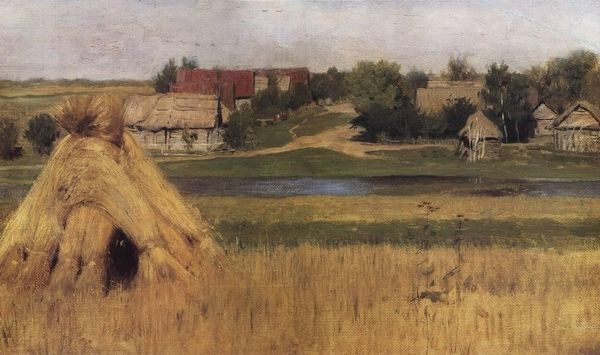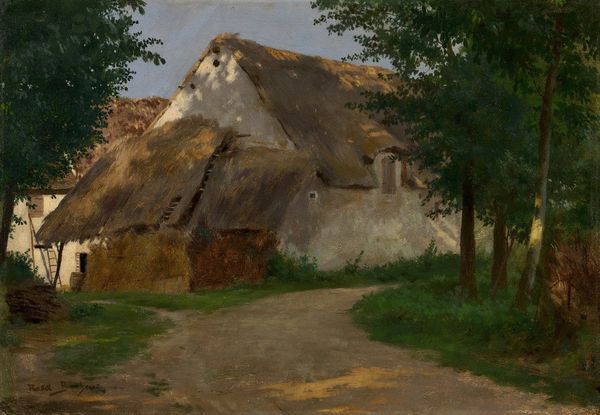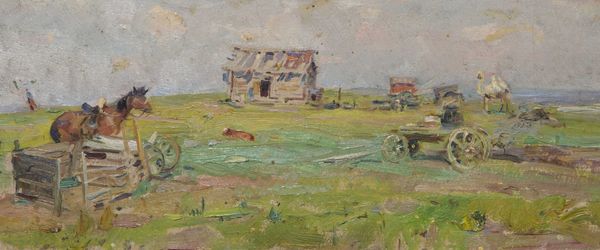
Copyright: Public domain
Curator: Before us, we have Konstantin Gorbatov’s oil painting, "Village Houses," created in 1903. Editor: My first impression is one of somber tranquility. The muted colors and rustic buildings evoke a sense of simpler times, yet there's a palpable quiet that feels almost melancholy. Curator: Absolutely. Gorbatov painted this in a period marked by social and political ferment in Russia, so such rural scenes spoke to the idealized past, which provided both comfort and also an awareness of the inequalities of urban-rural relations at that moment. What do you make of his portrayal of the built environment, though? Editor: I find his choice of subjects intriguing – weathered wood, thatched roofs, and a dirt path all rendered with Impressionistic brushstrokes. You’ve got this scene of idyllic simplicity but then the almost stark utilitarian nature of that barn front and center really pops to me. This evokes both the harmony and harshness that defined peasant life, wouldn’t you say? Curator: Certainly. The chickens foraging near what look to be small workhorses hint at both self-sufficiency and vulnerability. Consider also the Russian Avant-Garde’s interest in peasant art and material culture, situating peasant life not as 'backwards' but as integral to national identity. How would this intersect with contemporaneous feminist discourse on the rural female experience, do you think? Editor: Interesting point. Though Gorbatov’s image has no visible peasant at work, perhaps that one solitary woman behind the central building highlights a narrative where labor is made invisible, effectively romanticizing and yet sidelining their lived existence within village dynamics and even the Russian political landscape? I keep wanting more—to understand how this representation affected real life struggles. Curator: Gorbatov, here, provides us a visually rich portrayal of Russia at the turn of the century, one that both participates in and subtly challenges narratives of its time. Editor: Precisely. Seeing the context woven into his canvas allows us a different insight into our assumptions about identity, labor, and representation then and even now.
Comments
No comments
Be the first to comment and join the conversation on the ultimate creative platform.
